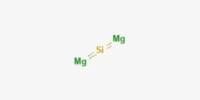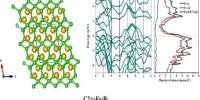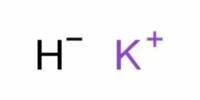Ammonium aluminium sulfate, generally known as ammonium alum or just alum, is a white crystalline double sulfate that is commonly found as the dodecahydrate (NH4)Al(SO4)2•12H2O. It is used sparingly in a range of specialty applications. Tschermigite is a rare mineral that contains dodecahydrate.
Aluminium ammonium sulphate is used as a repellant for birds and animals. It is extremely soluble in water, non-volatile, and does not remain in soil. It is a known irritant and is somewhat harmful to mammals. It is not hazardous to fish or aquatic invertebrates.
Properties
The majority of alums have an astringent and acidic flavor. They are colorless and odorless, and come in the form of a white crystalline powder. Alums are soluble in hot water and can be easily precipitated from aqueous solutions to form massive octahedral crystals. It is used in the production of medications and baking powder, as well as dyeing, tanning, and papermaking.
- Molecular Weight: 237.145199
- Appearance: White powder or coloress crystals
- Melting Point: N/A
- Boiling Point: N/A
- Density: 2.45 g/cm3
- Solubility in H2O: N/A

Production
Aluminium hydroxide, sulfuric acid, and ammonium sulfate are used to make ammonium alum. When combined with potassium alum, it makes a solid solution. Alumina is produced during pyrolysis. This type of alumina is used to make grinding powders and as a precursor to synthetic jewels.
The evaporation of a water solution containing ammonium sulfate and aluminum sulfate yields ammonium alum. It can also be made by processing ammonia with a mixture of aluminum sulfate and sulfuric acid. Alums are found naturally in a variety of minerals. Potassium alum, for example, can be found in the minerals kalinite, alunite, and leucite, which can be treated with sulfuric acid to produce alum crystals.
Uses
Ammonium alum is not a large industrial chemical or a particularly valuable laboratory reagent, but it is inexpensive and effective, which makes it suitable for a wide range of niche uses. It is used in water purification, vegetable glues, porcelain cements, deodorants, tanning, dyeing, and fireproofing textiles, among other things. The pH of the solution produced by topical application of ammonium alum with perspiration is normally in the mildly acid range, ranging from 3 to 5.
Animal repellent sprays frequently contain ammonium alum. The commercial applications of alums are mostly due to the hydrolysis of aluminum ions, which results in the precipitation of aluminum hydroxide. This chemical has a variety of industrial applications.
















